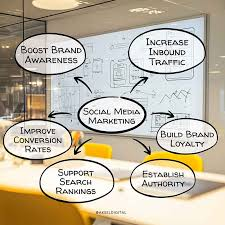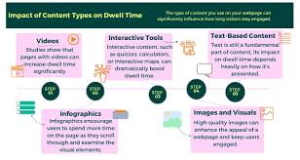1. Boosts SEO and Online Visibility
When you regularly create blog content, you’re adding new pages to your website, each of which can be indexed by search engines. This gives you more opportunities to rank for keywords that potential customers are searching for. The more optimized your posts are, the better your chances of appearing in search results. For small businesses, the organic traffic driven by blog posts is invaluable because it attracts customers who are actively looking for the products or services you offer.

Example: If you’re a local bakery, a blog post on “The Best Wedding Cake Flavors in [Your City]” will likely bring in brides-to-be who are searching for cake ideas, making your business more visible to a targeted audience.
2. Establishes Authority in Your Industry
Blogging allows you to demonstrate your expertise and share insights that are valuable to your target audience. By consistently publishing high-quality, informative content, you position your small business as a thought leader in your industry. This is crucial for building trust—customers are more likely to choose businesses they believe are experts in their field.

Example: If you’re a fitness trainer, writing blog posts on topics like “5 Effective Post-Workout Nutrition Tips” or “How to Stay Consistent with Your Fitness Routine” showcases your knowledge and helps establish credibility in your niche.
3. Drives Organic Traffic
Blogging is one of the best ways to attract organic traffic to your website. Each blog post adds a new indexed page to your site, which can attract traffic through search engines. This is a long-term strategy: the more you blog, the more opportunities you create for your website to appear in search results.
Unlike paid ads, which stop working once you stop funding them, the content you create with blogging continues to work for you in the long run. It drives traffic without the ongoing costs.

Example: A well-optimized blog post about “How to Choose the Best Home Insurance” could bring new customers to your small insurance business for months or even years after the post is published.
4. Strengthens Customer Relationships
Blogging isn’t just about attracting new customers; it’s also a great way to engage with your existing audience. Through your blog, you can address common customer questions, provide valuable information, and give insights into your company’s culture. This strengthens the bond with your audience by showing them that you’re not just interested in making a sale, but in offering them genuine value.

Example: A small local restaurant can blog about topics like “How We Source Our Fresh Ingredients” or “Meet the Chef Behind Our Signature Dish,” humanizing the brand and fostering deeper connections with their customers.
5. Supports Social Media Marketing
Your blog content can serve as a backbone for your social media strategy. By sharing blog posts on your social platforms, you can drive traffic back to your website. Blog content also gives you something valuable to share consistently, which is essential for keeping your audience engaged.

Example: If you write a blog post about “Top 10 Trends in 2025 for Sustainable Fashion,” you can create social media posts teasing snippets of the blog, linking back to the full post on your website.
6. Generates Leads
Blogging allows you to create content that’s specifically designed to convert visitors into leads. You can use your blog to offer valuable resources such as free downloads, guides, or access to exclusive content in exchange for your visitors’ contact information. With effective calls-to-action (CTAs) embedded in your blog, you can encourage your readers to take the next step in the sales funnel.

Example: A software company might write a blog post like “5 Ways Our Tool Can Save You Time Every Day” and include a CTA offering a free trial of the software.
7. Encourages Engagement and Feedback
When you allow comments on your blog, you create a space for readers to interact with you. This engagement can provide valuable feedback on your products, services, or content itself. The feedback can also give you insight into what your audience cares about and help shape future content or business strategies.

Example: A local pet store might blog about “How to Care for Your Pet’s Health in Winter” and invite readers to share their experiences or ask questions, which could spark more conversation and engagement.
8. Showcases Products or Services
Blogging is an effective way to highlight your products and services without being too salesy. By creating educational content, you can subtly incorporate your offerings while addressing pain points your audience might be facing. Posts like product reviews, tutorials, or success stories provide value while showcasing your solutions.

Example: A small skincare business could blog about “How to Achieve Clear Skin Naturally” and incorporate their products in the solution, making it clear how their products can help the reader achieve the desired outcome.
9. Improves Website Dwell Time
When you publish interesting, high-quality blog posts, visitors are more likely to spend time on your website. The longer they stay, the more likely they are to take an action—whether it’s subscribing to a newsletter, downloading a resource, or making a purchase. Increased dwell time is also a positive SEO signal to Google, which may help improve your ranking.

Example: A local travel agency could write about “10 Hidden Gems to Visit in [Your Region]” and include detailed travel guides and photos, encouraging visitors to stay longer and explore more content on their site.
10. Cost-Effective Marketing Strategy
Compared to other forms of marketing, blogging is an incredibly cost-effective strategy. Many small businesses have limited marketing budgets, but with blogging, they can create valuable content for free or at a low cost. When done correctly, blog posts continue to work for you long after they’ve been published, providing ongoing benefits without requiring a substantial investment.

Example: A small business owner in the home improvement industry can write blog posts like “How to Remodel Your Bathroom on a Budget” to attract homeowners looking for affordable renovation solutions. Over time, those blog posts continue to bring in traffic, leads, and conversions, all with little ongoing cost.
Final Thoughts:
For small businesses, blogging isn’t just a marketing tool—it’s an investment in long-term growth. By dedicating time to create valuable, insightful, and engaging content, you’re not only improving your visibility and authority but also building trust with potential customers. Whether you’re trying to attract more traffic, convert leads, or simply stay top of mind, a blog provides the platform you need to achieve these goals while keeping costs low.
Would you like help in your business website?

